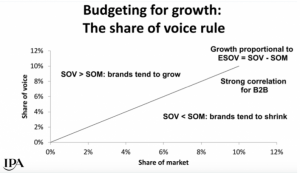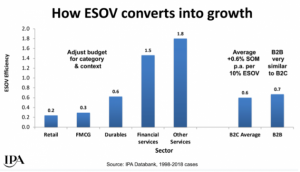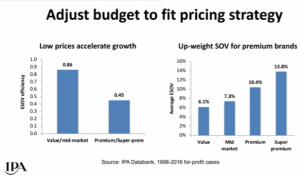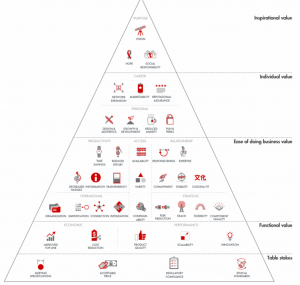There has been a recent flurry of articles, opinions and even some research into the importance of the brand in B2B marketing today. By contrast, we are presented with a transactional model of B2B marketing as the current norm. Here at Agency Inc we have long known and preached the importance of the former, but we simply don’t recognise the latter as ‘marketing’.
Human Decision Making
In our long experience of B2B marketing, we’ve not yet met a wholly rational, utility maximising, discretely transactional, business decision maker. In fact if we’ve learnt anything from centuries of philosophy and decades of Behavioural Science it is surely that no such human exists.
All of which speaks to a dichotomy that matured with the enlightenment; the separation of faith and reason into separate domains. This had the effect of easing the church (and so ethics and morality) out of the realm of business. Today we still (largely) present business as a realm of commercial and rational decision making wholly separate to other emotional and subjective aspects of human life.
To sustain the fiction we would need every business decision maker to undergo a transformation on the threshold of the business premises or at the digital portal; switching from their affective, emotional, ethical self and switching on a rational business mind, impervious to human concern, focused exclusively on commerce and profit.
We can and do tolerate the classical economic fiction of the utility maximising economic agent because of its clarity, simplicity and analytical benefits. Yet, when we try to extend and harden the idea in the context of B2B as opposed to B2C marketing we risk entering the realms of parody.
Every single B2B decision maker we’ve ever met has been only too human, with concerns and worries much like the rest of us. They want to get ahead in their career, keep their job, pay their mortgage, learn new skills and meet new contacts. They want to work with third parties who can plug skills gaps, anticipate future developments, educate and inspire, have a positive vision, provide day-to-day support, manage and mitigate risk, and of course deliver timely, cost-effective, quality, products, services and solutions.
The human nature of our decision making is revealed in the risk aversion said to characterise much B2B activity; the idea that business decision makers are motivated not so much by making the best choice so much as being sure that they are not making a bad choice. And as we know when risks are involved then emotion tends to become more prominent, not less.
The power of the best brands, and their value propositions, is of course that they are able to connect with our rational AND emotional selves. In doing so they build long term memories and mental associations.
Brand and Activation
So, we can look at the brand, rationally, as a vital source of assurance for business decision makers, highlighting the vitality and longevity of the business. Or we can look to build a hybrid rational and emotional brand that delivers positive assurance, an empowering promise and a consistent brand experience.
Ultimately, as Lippincott report, B2B marketers, much like consumers, are looking to work with organisations that they ‘enjoy doing business with’. This simple metric correlates with long term business success. This is a vital insight to consider in today’s digital paradigm.
In marketing terms we need to think about the dynamic between rational and emotional brand building and direct, rational, sales activation – and it is this very relationship that lies at the heart of the latest (IPA Databank) analysis released by the estimable Binet & Field in collaboration with LinkedIn.
The latest data release builds on the duo’s seminal work ‘The Long and Short of It’ and provides a specific B2B cut of the same IPA historic campaign databank. The original findings suggested that the most effective marketing strategies were weighted 60:40 between brand and sales activation. This specific analysis of B2B marketing campaigns recommends an optimal split of 46:54 between brand and sales.
Therefore any business currently committing approximately 50% of their marketing budget to brand building campaigns and activities is doing very well. But how many of those businesses are there in a market dominated and seduced by ephemeral digital metrics?
Before getting into the analysis let’s restate here Binet & Field’s six principles for B2B brand growth:
1. Build a strong brand
2. Expand the customer base
3. Maximize mental availability
4. Harness the power of emotion
5. Budget for growth
6. Balance the budget between brand building and activation.
That all looks quite different to the focus on digital, automation and performance marketing that dominates today’s B2B landscape. And despite all of the sophistication of these digital campaigns and tactics, what is the key criteria for brand growth according to Binet & Field?
Their study reveals that it’s old fashioned advertising share of voice, specifically an excess share of voice (ESOV) above and beyond your current market share, with this excess needing to be upweighted to support a premium price proposition.

Other work by Binet & Field highlights the importance of sustaining this ESOV to grow a brand, even during a recession, while, equally importantly, the converse is true; an underspend on share of voice relative to market share will see a brand shrink over time.


Interestingly the importance of brand in advertising is seen to increase according to the brand’s maturity with an early growth company recommended to allocate as much as 2/3 of advertising spend to activation compared to a mature brand (circa 1/3) and a leading brand (circa 1/4).
Brand Fame
Another major insight from the work, and another major contrast with established B2B practices is that reach is critical to success in B2B marketing. Supporting that insight is the finding that fame is far more powerful than awareness or differentiation in B2B marketing.
Put simply no-one ever grew a successful business on brand loyalty and customer retention alone. The best communications and advertising strategies aim to reach both new and existing customers in a broad approach, maximising mental availability (i.e. fame or saliency) across the category.
When considering mental availability, we can use Byron Sharp’s definition; ‘a brand’s mental availability refers to the probability that a buyer will notice, recognize and/or think of a brand in buying situations’. A higher mental availability means being easily noticed or thought of in multiple buying situations, surely the objective of any brand, and exactly the position of Amazon, for example, in many retail categories today.
The key point, and one that usefully connects the concepts of fame, mental availability and saliency is distinctiveness. This is bigger than differentiation and should be built from robust market and audience insight.
When we consider the relationship between brand and activation, while it’s important to know that brand leans toward the emotional, it’s more important to recognise that the role of emotion can be stronger in B2B than in B2C marketing – principally due to the greater fear of failure and of the negative consequences and costs of a bad choice (including on personal reputation).
It is also important to be aware that brand naturally lends itself to a longer timeframe while activation operates on shorter time horizons. As complementary research from The Marketing Practice, in association with Marketing Week [1] shows, it is vital that businesses are operating on both horizons in order to grow their business.
In this sense the brand provides a consistent frame within which the business can be agile and innovative – without losing touch with its core values and purpose.
The recently released Brand Z (2019) [2] research from Kantar confirms the importance of the above approach to brand building within B2B arguing that it is particularly vital for businesses to build strong brands in the technology sector owing to the sheer pace of change and degree of future uncertainty.
In Kantar’s overall brand analysis (B2C and B2B) saliency is the number one driver of brand value – and when effectively combined with differentiation is seen to accelerate recognition, penetration and market share. Here we can see some apparent tension with the findings of Binet & Field, although this may be more semantic than real when we think about the relationship between fame and saliency.
The second most important driver of brand value for Kantar is social presence – reflecting the vital role of social channels in today’s business and consumer markets. Thus social is a vital brand building channel, and in these noisy environments distinctiveness is surely the key to effective cut-through.
Returning to the emphasis on the power of emotion in B2B marketing, this approach complements research published by Bain & Co in 2018 exploring The Elements of B2B Value [3], while highlighting the strength of subjective values in business decision making. The B2B Values pyramid, shown below, builds from what they described as the table stakes of price and product features to higher order requirements.
The Bain analysis includes 36 values above and beyond the table stakes assumed of all vendors.
As we climb the pyramid beyond the table stakes and functional (objective) values we reach the vital Ease of Doing Business tier including more than 50% of all of the values available. Many of these speak to the Lippincott comments regarding the importance of enjoying doing business with a company. Above and beyond this tier we reach individual and inspirational values.
The Elements of B2B Value – Bain & Co 2018

Of course no business can deliver against all of these values all of the time, and yet the Bain analysis shows that the greater the number of values at which a business performs strongly the greater the prospect of increased customer loyalty. The challenge therefore is to speak to customers and prospects in order to understand which values are most important to them and to benchmark your value proposition against those of your competitors.
Concluding comments
These are exciting and challenging times for B2B marketing, we all recognise how digital channels have changed the game, vastly reducing the influence of the salesperson, demanding far more involved and ongoing relationships than ever before (vital at a time of rising complexity and ever longer purchasing cycles), while driving ever more commoditisation of B2B offerings.
Perhaps most importantly digital, together with globalisation, has vastly increased the volume of information, noise, and choices available to all customers. Little wonder people speak today of marketing in the ‘Attention Economy’.
At Agency Inc. our guiding light is simplicity, a concept ideally suited to today’s marketing challenges.
Our work across brand, campaign and content projects aims to focus client minds on the fundamental attributes and purpose of the brand (i.e. distinctiveness) and how this is realised through every brand touchpoint (i.e. saliency). Our established processes and messaging hierarchies ensure that all campaign activities fit with and support the over-arching brand and value proposition.
We are seeing B2B clients increasingly recognising the benefits of rigorously evaluating their brand and communications, understanding how and by whom they are recognised and perceived in their markets, and working to maximise their mental availability across all relevant segments.
And, unlike others, we do see a strong role for quality content in relation to both brand and activation strategies.
We believe that the right content, in the right format and in the right places can deliver an effective distillation of brand vision, purpose and values, while addressing particular business questions and issues, and providing platform for wider market engagement.
But most importantly, we enjoy working with businesses looking to build and sustain strong and distinctive brands – and we look forward to working with you on your brand challenges.
[1] https://www.marketingweek.com/2019/05/16/long-short-b2b-marketing/
[2] http://www.millwardbrown.com/brandz/rankings-and-reports/top-global-brands/2019








